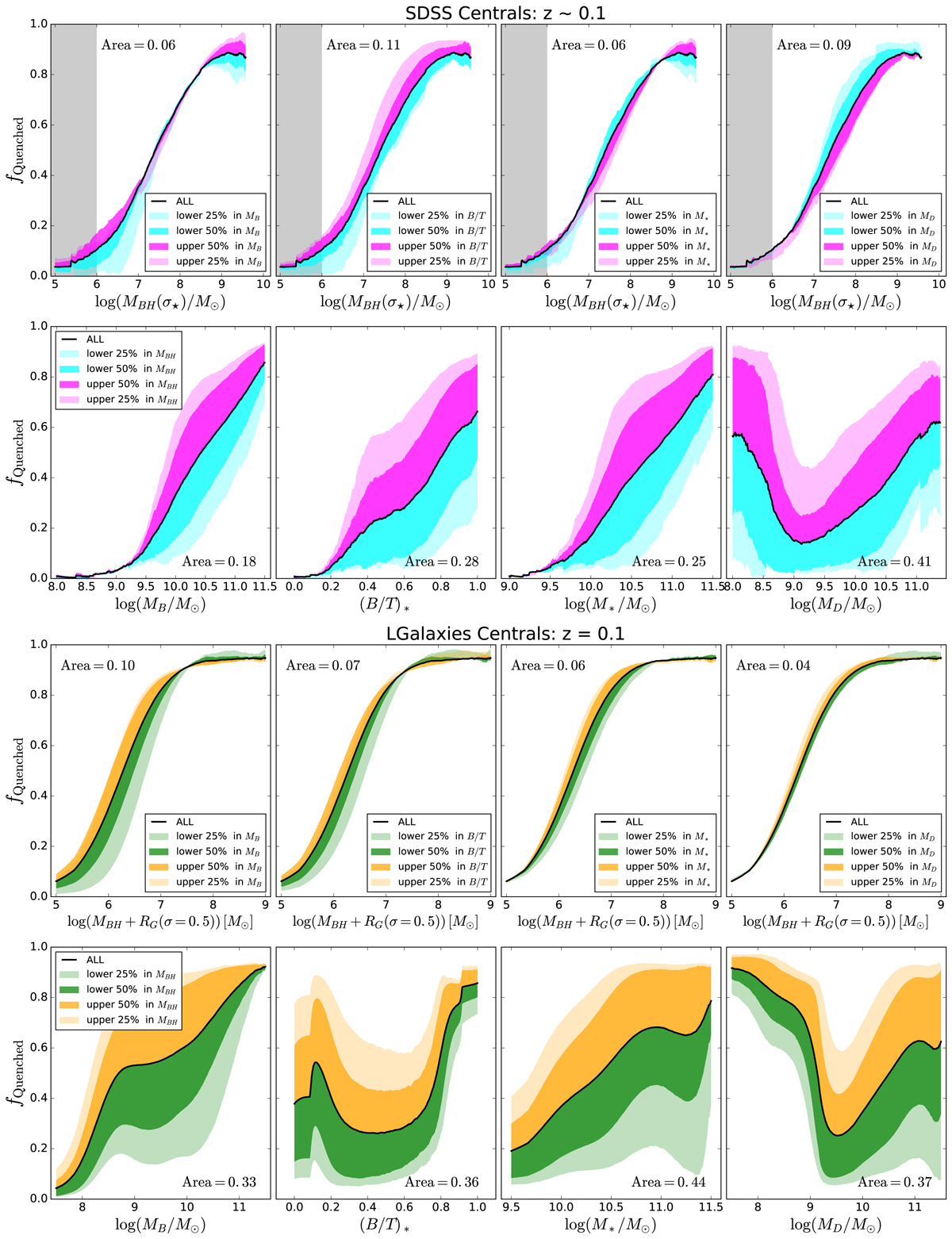Fig. 18.

Download original image
Quenched fraction relationship with black hole mass, and each of the bulge–disk parameters. Results are shown for observations (top panels; SDSS at z ∼ 0.1) and for a semi-analytic model (bottom panels; LGalaxies at z = 0.1). The top row of each panel indicates the quenched fraction relationship with black hole mass, with the second row of each panel indicating the quenched fraction relationship with each of the bulge–disk parameters in turn. The quenched fraction relationships are subdivided into percentile ranges of a third variable (as indicated by the legends). We quantify the tightness of the relations by the area subtended by the upper and lower 50th percentiles in each third parameter (which is displayed on each panel). The typical uncertainties on the area statistic are ≤0.01 for the SDSS and ≤0.005 for LGalaxies. For the observational data, black hole mass is estimated through the MBH − σ⋆ relation, and a volume correction is applied. For the model, black hole masses have noise added to approximate the calibration uncertainty in the observational estimate. For both observations and the model, quenching is defined consistently as ΔsSFR(z) < 1 dex. Clearly, in both the SDSS and LGalaxies, the fQ − MBH relationship is considerably tighter than for any other parameterisation.
Current usage metrics show cumulative count of Article Views (full-text article views including HTML views, PDF and ePub downloads, according to the available data) and Abstracts Views on Vision4Press platform.
Data correspond to usage on the plateform after 2015. The current usage metrics is available 48-96 hours after online publication and is updated daily on week days.
Initial download of the metrics may take a while.


